Come join us to kickoff our 2022 Wildfire Risk Reduction season. We’re meeting at 14:00 (2pm) on Sunday, 26 June, at the Gypsy Winds barn on Doolittle Road. See y’all there!
Author Archives: Steve
USFS Fire Mitigation in the Monument Preserve
Starting today, 2022-05-16, the USFS will be conducting thinning operations at the Monument Preserve as a form of fire mitigation. These operations are a part of the larger Upper Monument Creek Landscape Restoration Project to restore forests in the Rampart Range area.
Our neighborhood assisted the development of this plan — so your hard work has come to fruition!
Visit the Friends of the Monument Preserve website for more information.
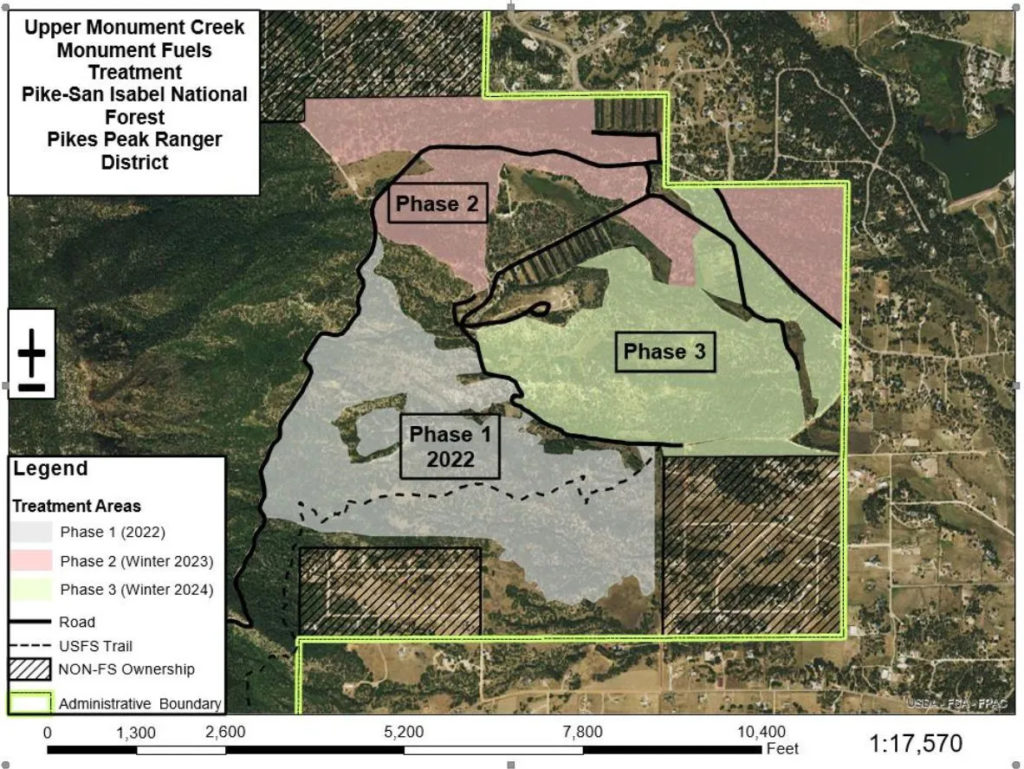
Firewise Certificate for 2021
We’ve earned our 2021 Firewise Certification :^)
Here’s the certificate, for those that need it for their insurance.
FireWise Status Renewed
Congratulations! We’ve earned our NFPA FireWise status for 2020. Here’s the certificate for the upcoming year. Provide this to your insurer if they offer a FireWise discount.
2020 Firewise Application Submitted
Thanx everyone for your hard work on our fire mitigation activities this year! Our annual Firewise application was submitted today recording the investments we did this year.
3rd Fire Mitigation Event – Firebreak at S7
A cold and snowy day is no match for this crew! Braving 6 °F temps and blowing snow, members of the south and west crews completed an end-to-end clear-cut through the S7 gully. Approximately 20 truckloads of slash were cut, ready for bucking, drag-out, and chipping. Although by no means complete, we now have access into the gully to finish the job. Watch your email for an upcoming mitigation event!
2nd Firewise Event 2020-10-03 – Unstoppable Progress!
Our community held its second FireWise event on Saturday October 3rd, 2020. Although we had a smaller contingent, as expected due to vacations, we made great progress on our plan, completing the mitigation of areas S4 and W6. A few of us hung in there and got a start on the new firebreak for the gully at S7, too!
Firewise Event 2020-09-12 a Huge Success!
Our FireWise event on Saturday Sep 12th was a huge success! We had more than a dozen neighbors turn out with the end result being 132 cubic yards of slash cut and chipped! The maintenance of the east areas was completed along with the chipping of some old slash piles from earlier in the season. Good job all!
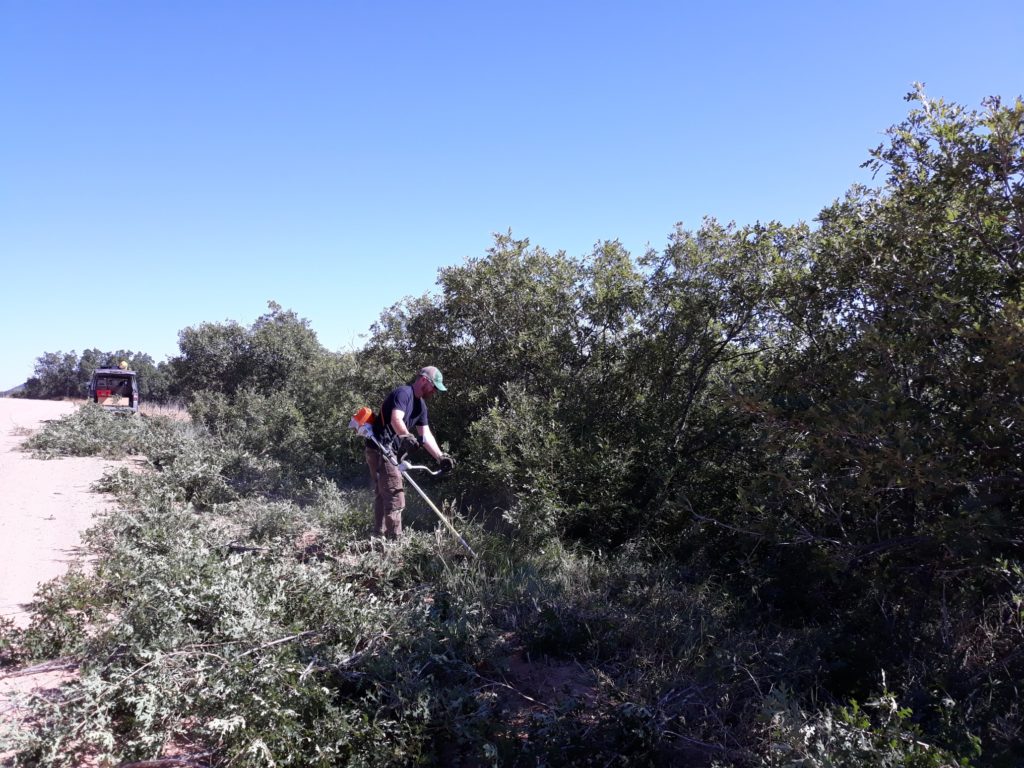
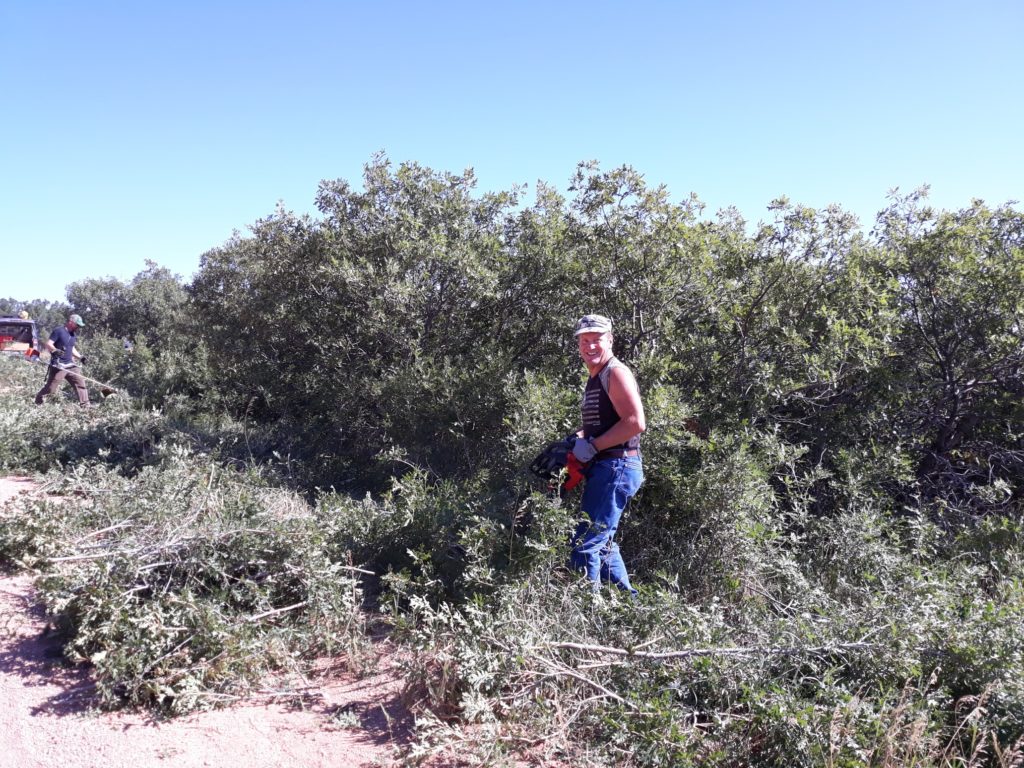
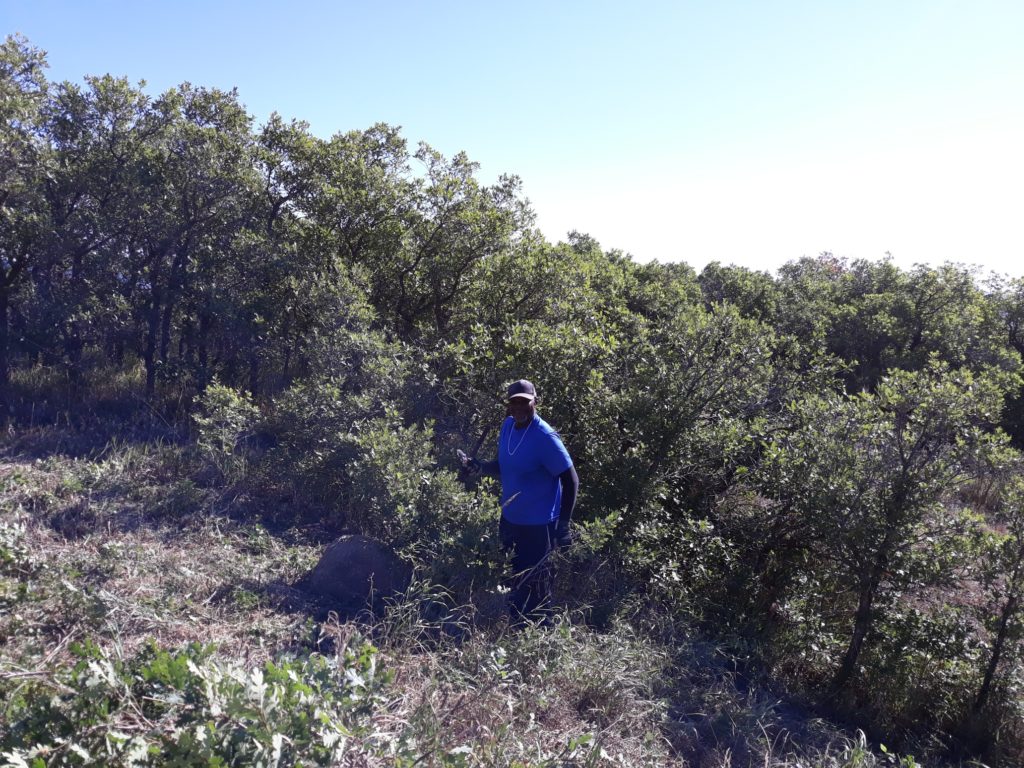
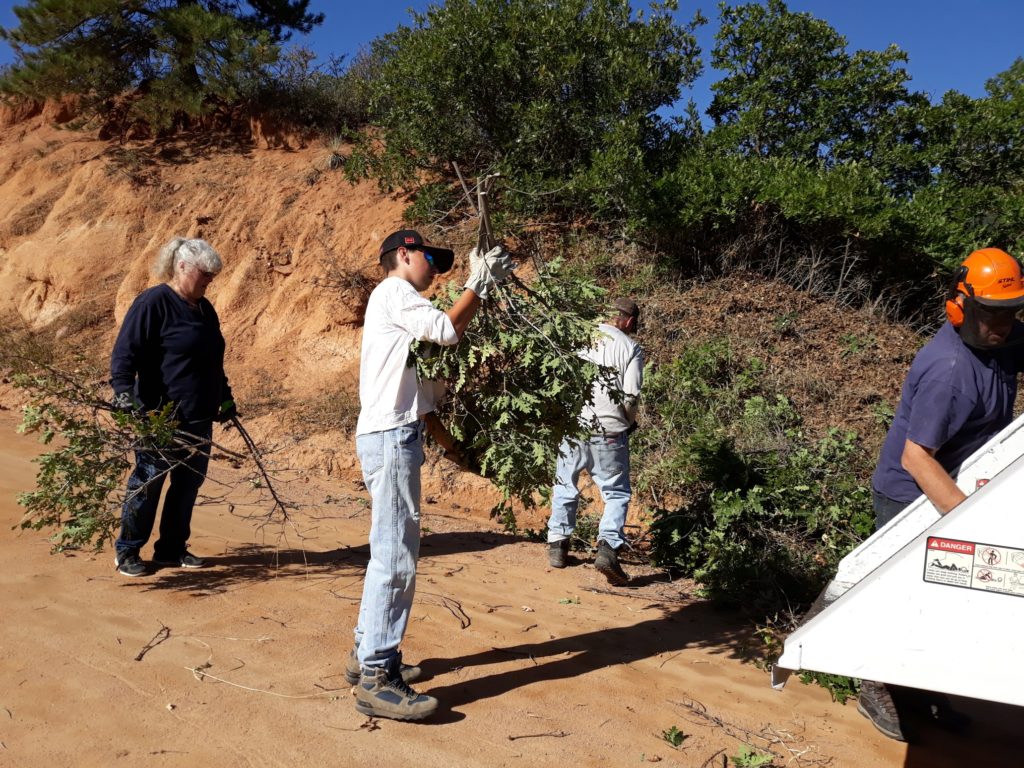

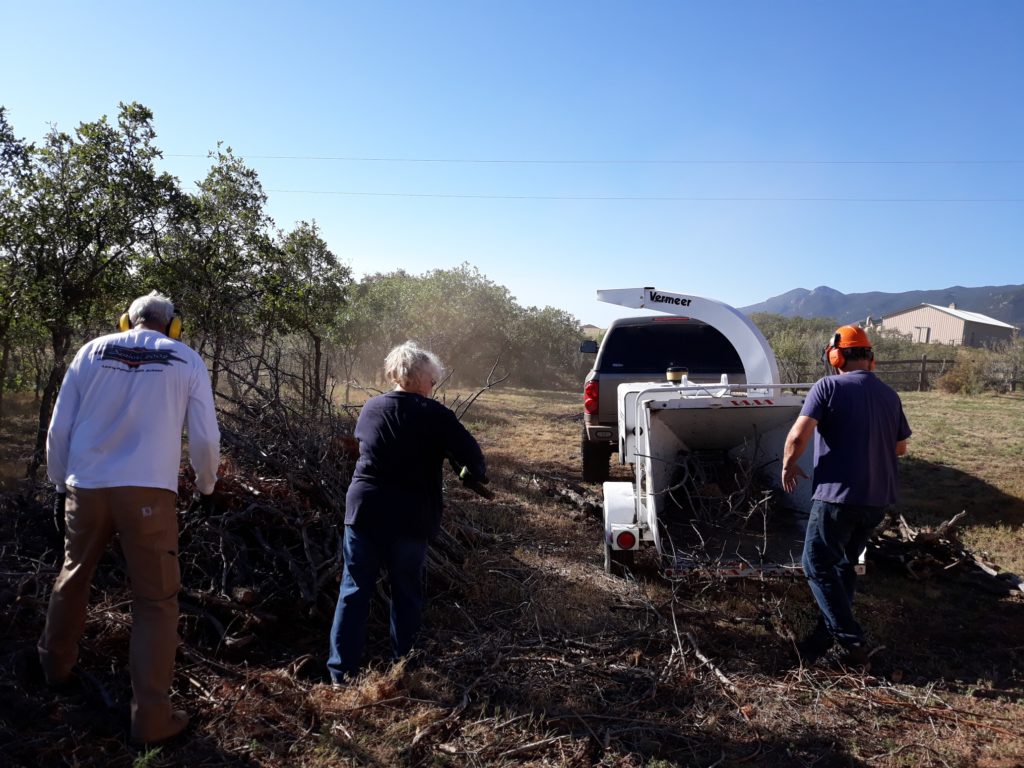
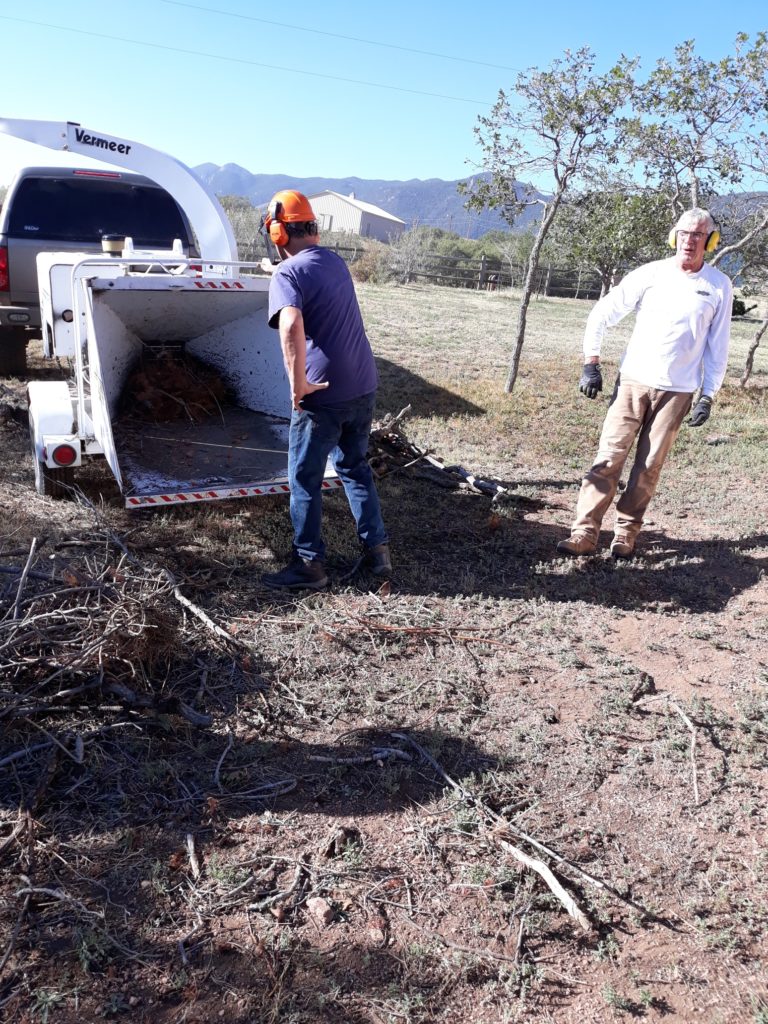
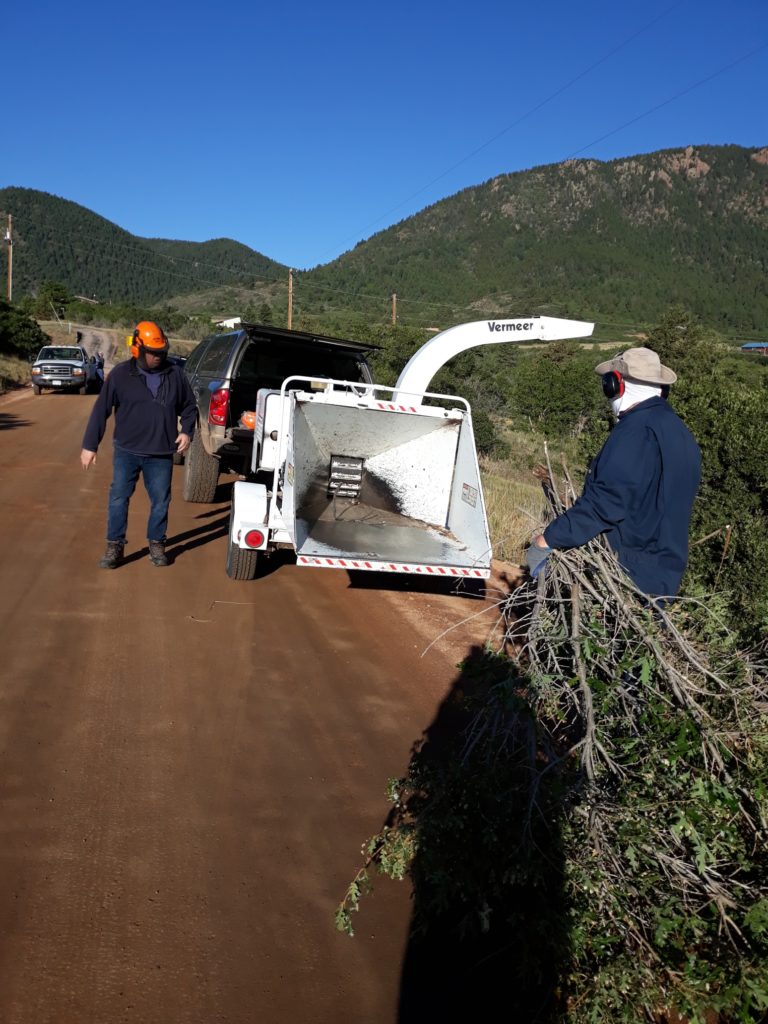
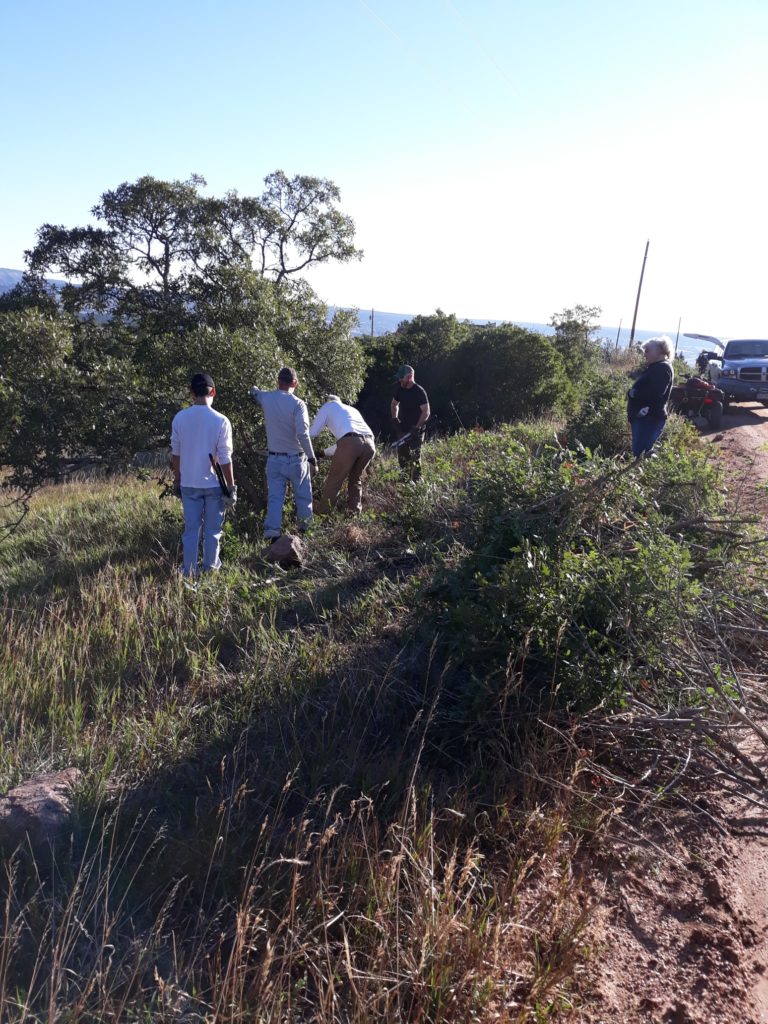
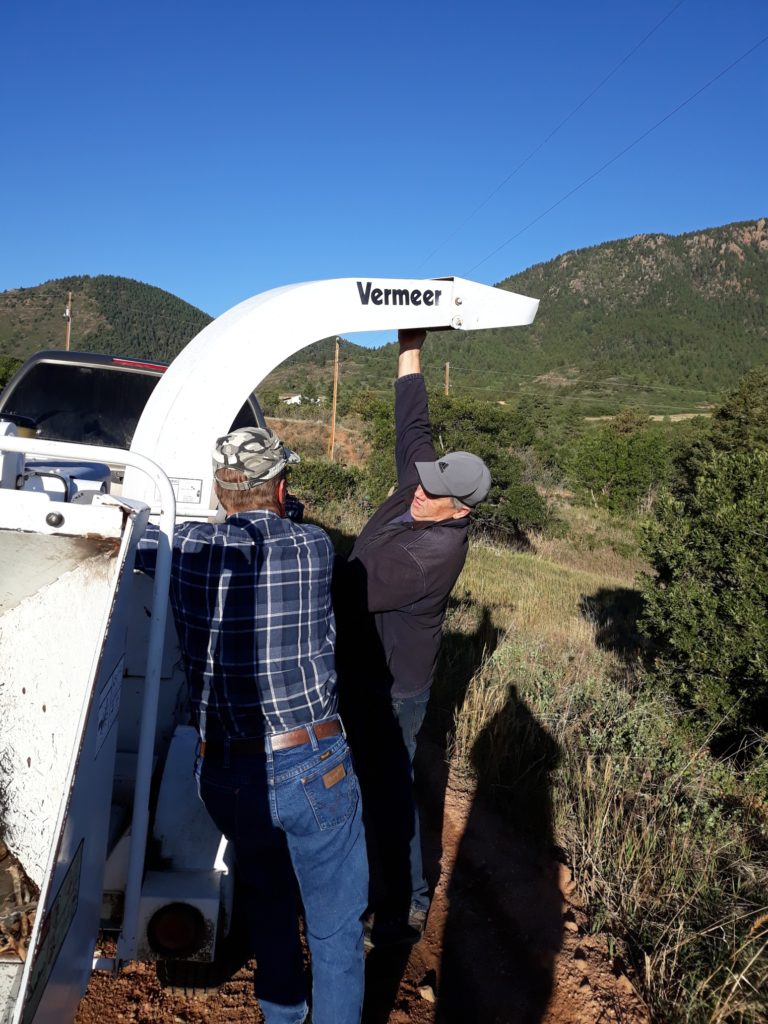
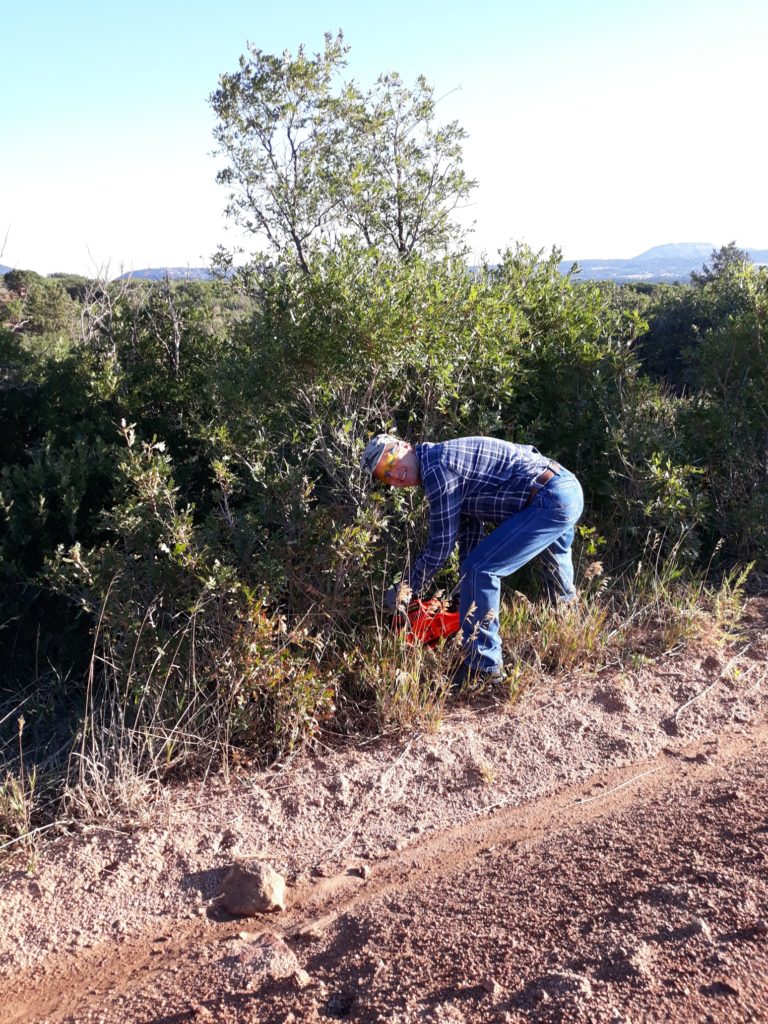
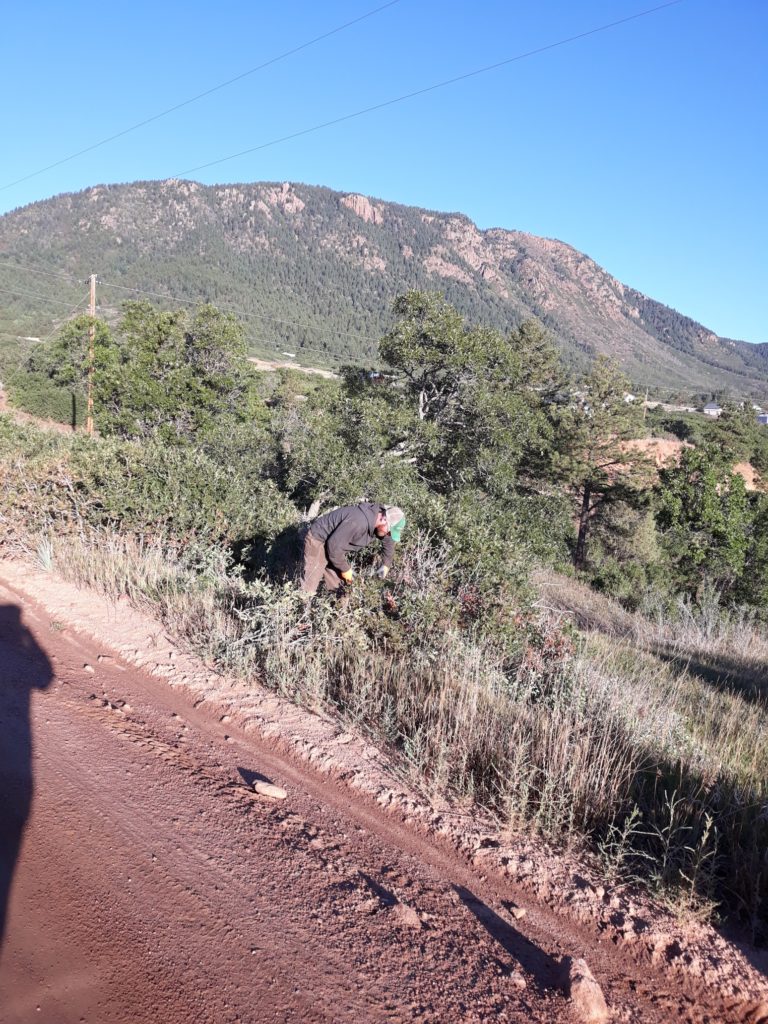
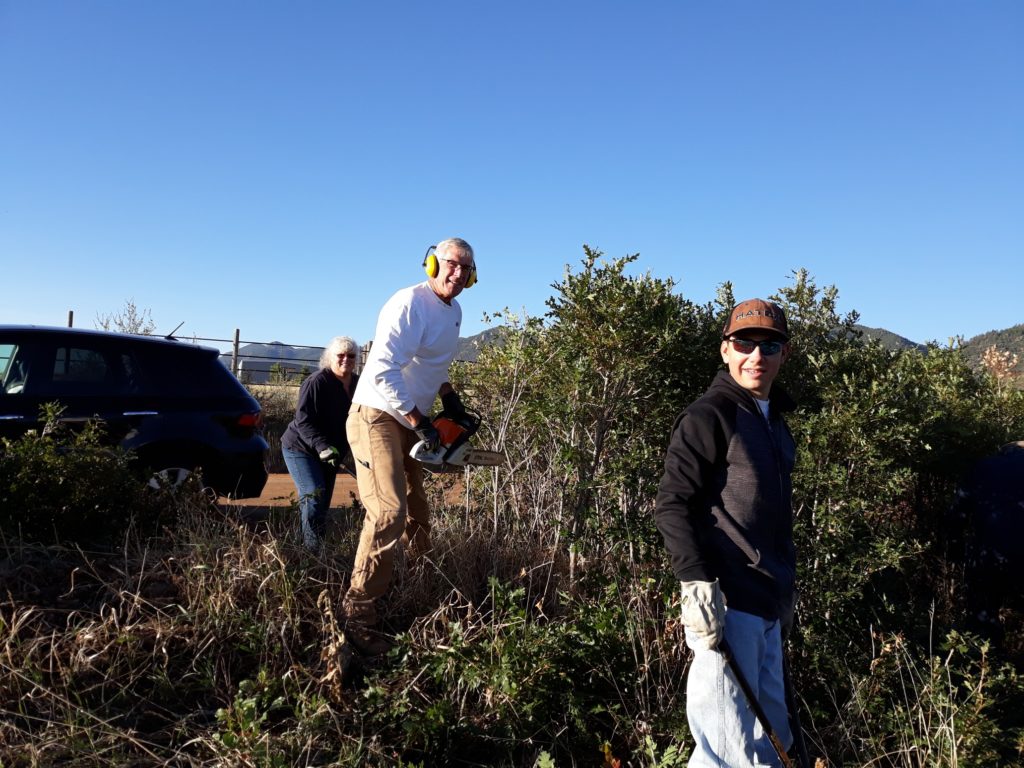
Firewise Chipping Day 2020-09-12 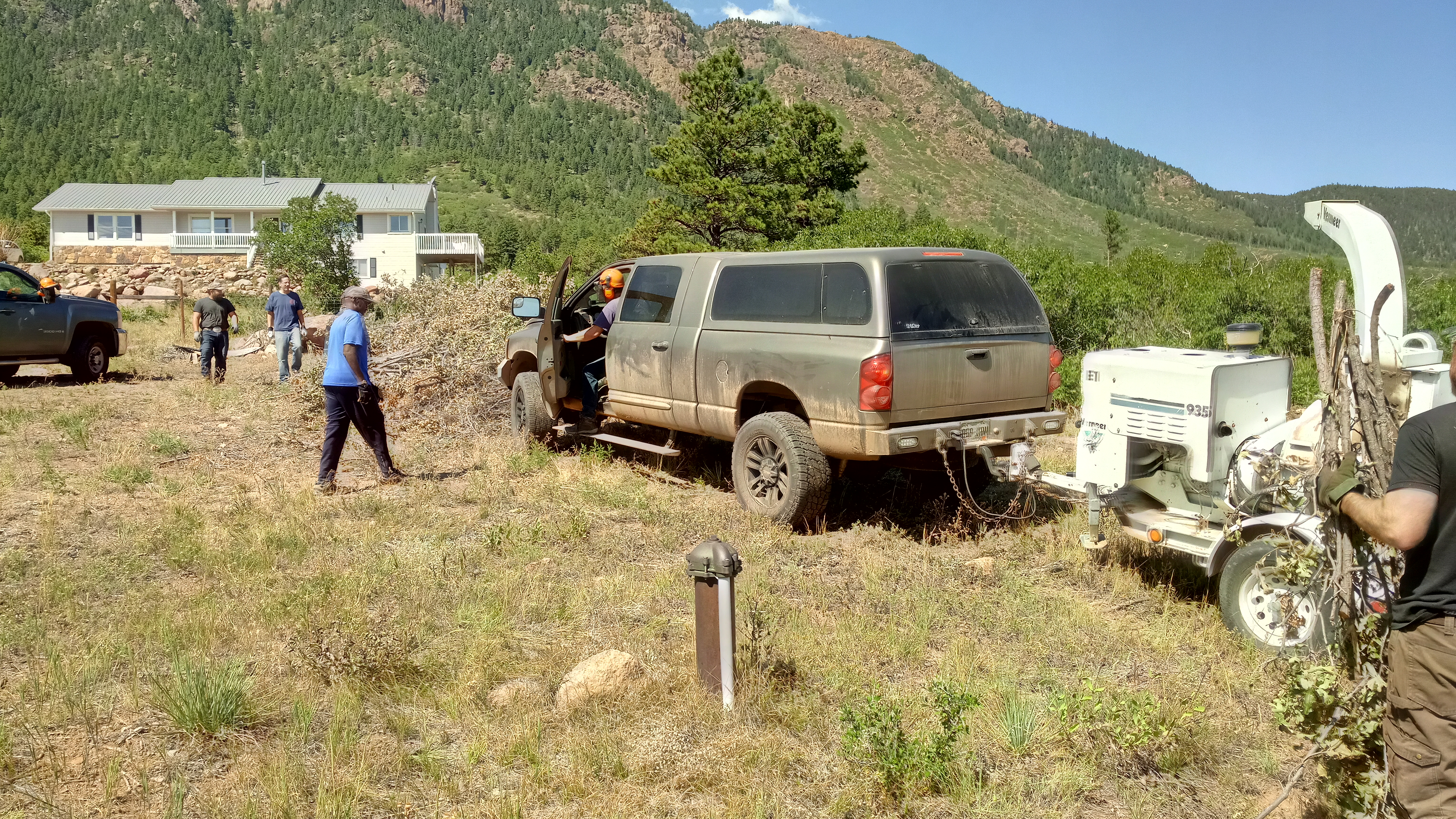
Firewise Chipping Day 2020-09-12 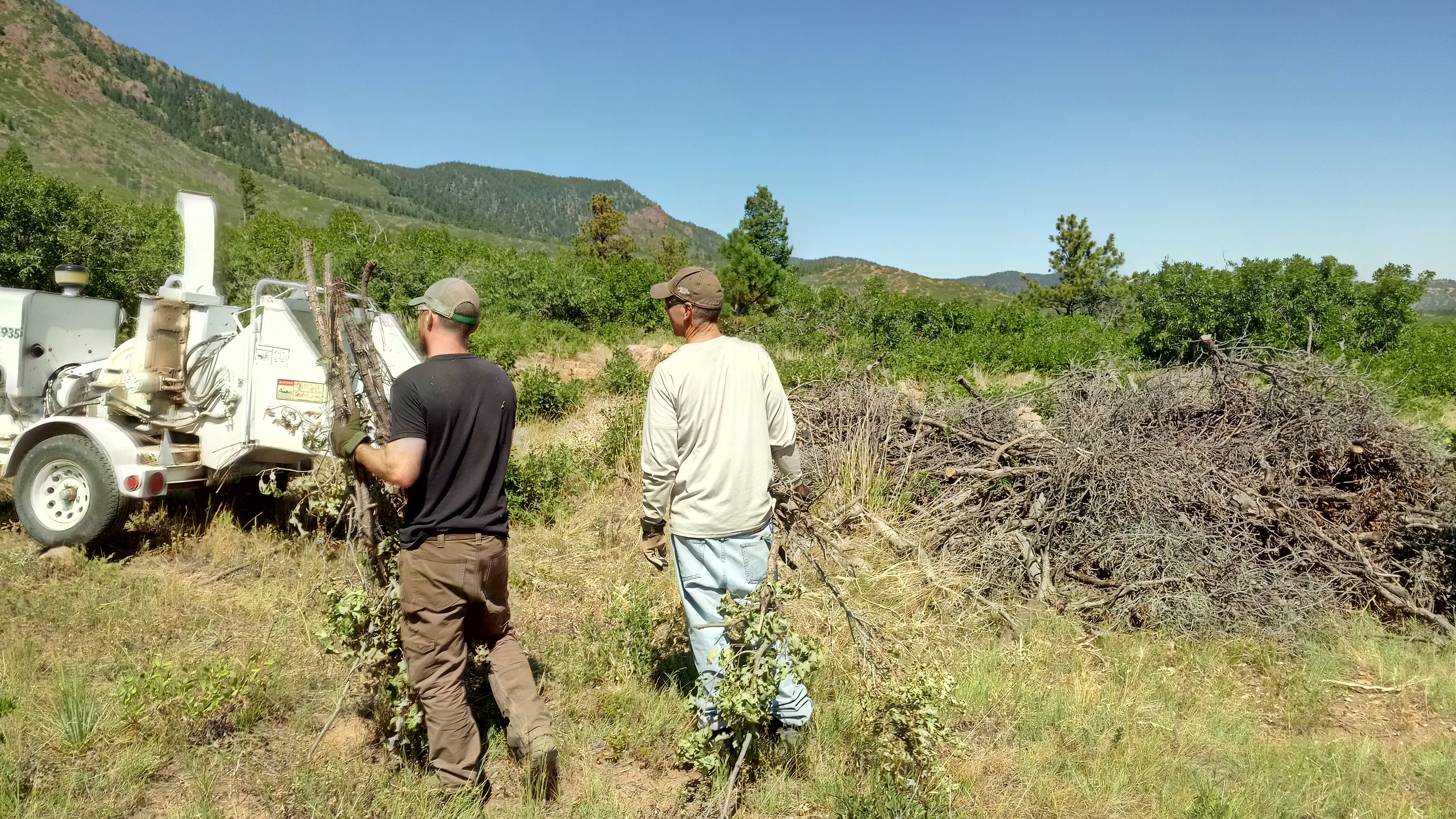
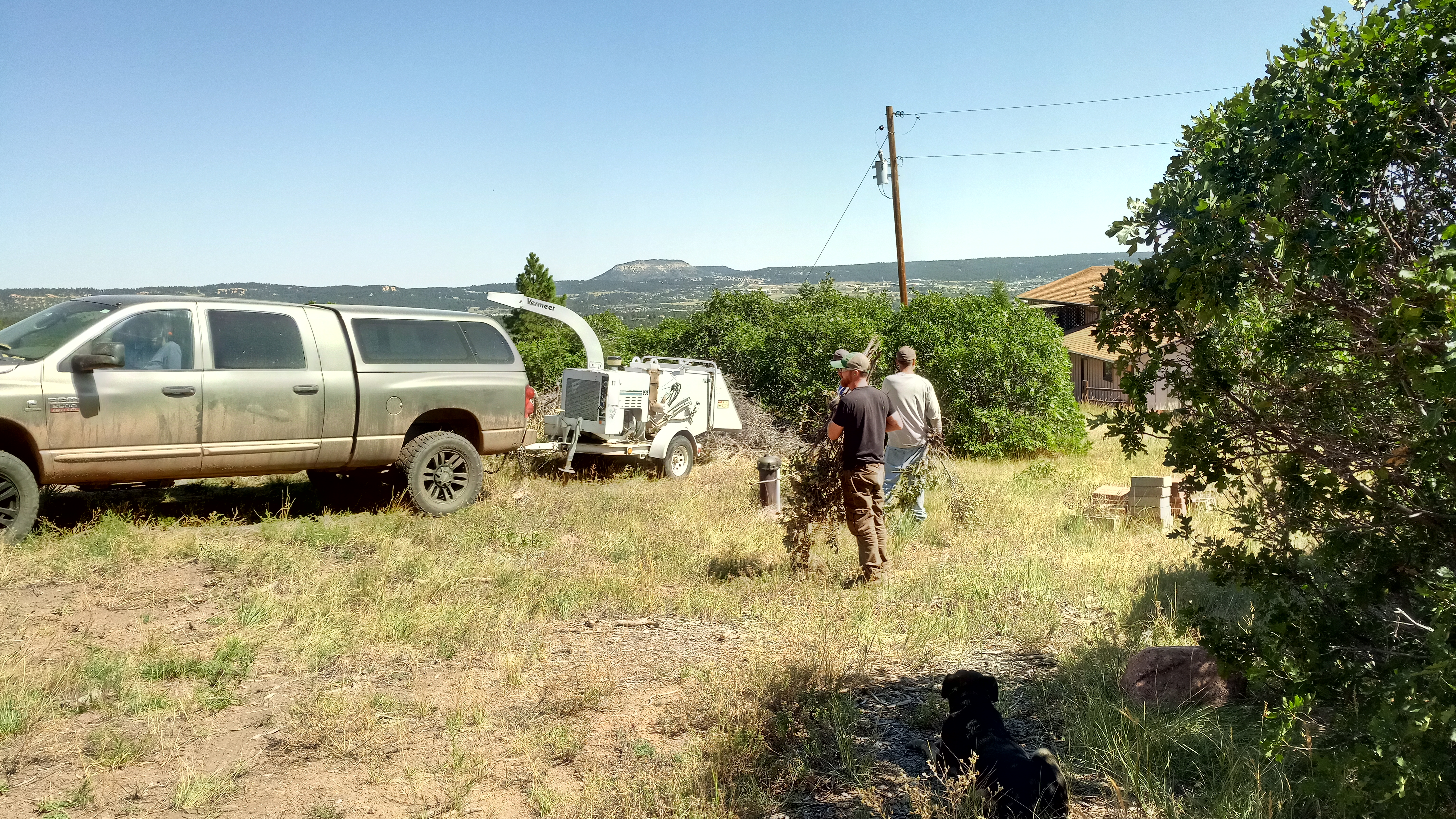

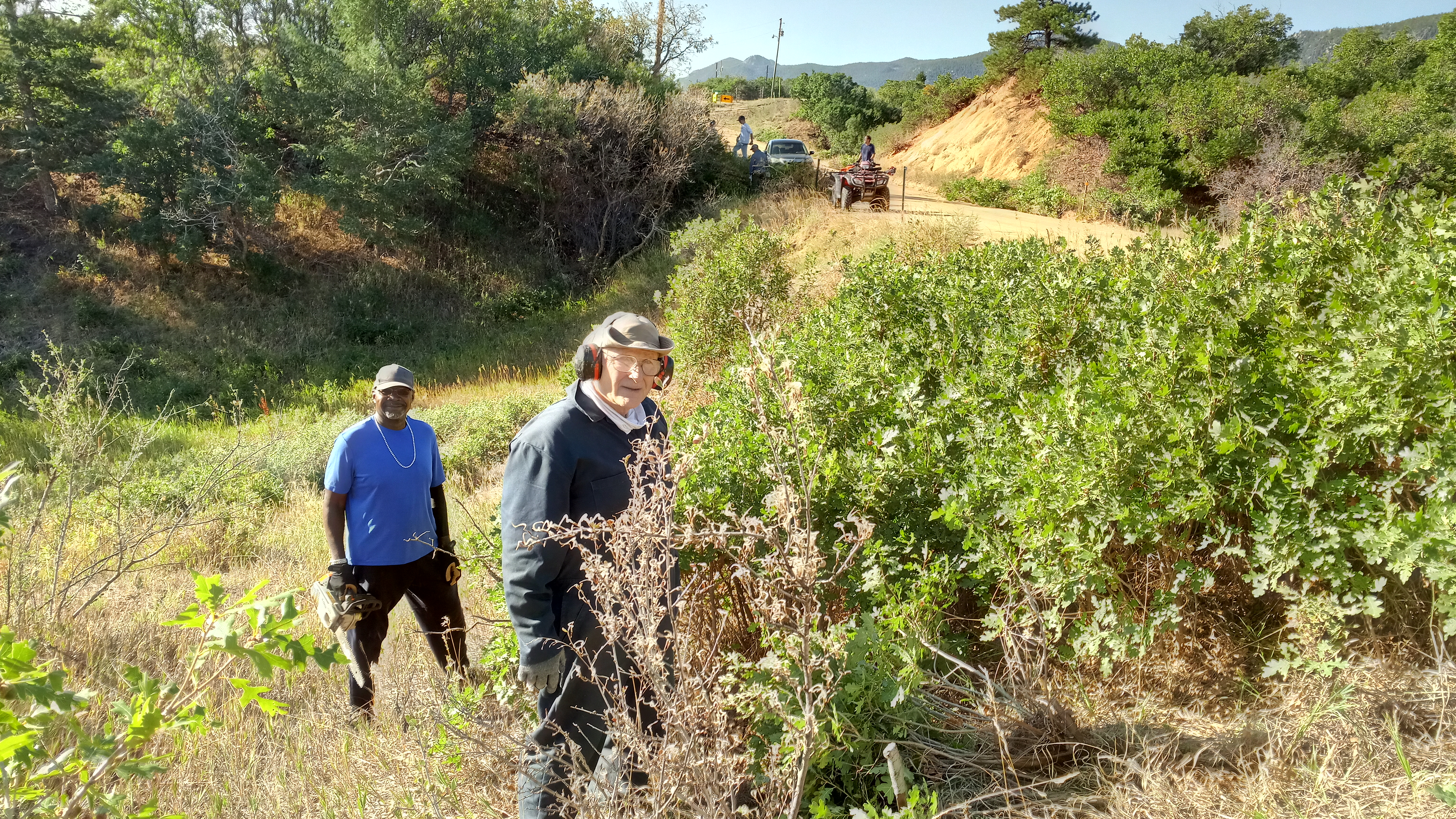
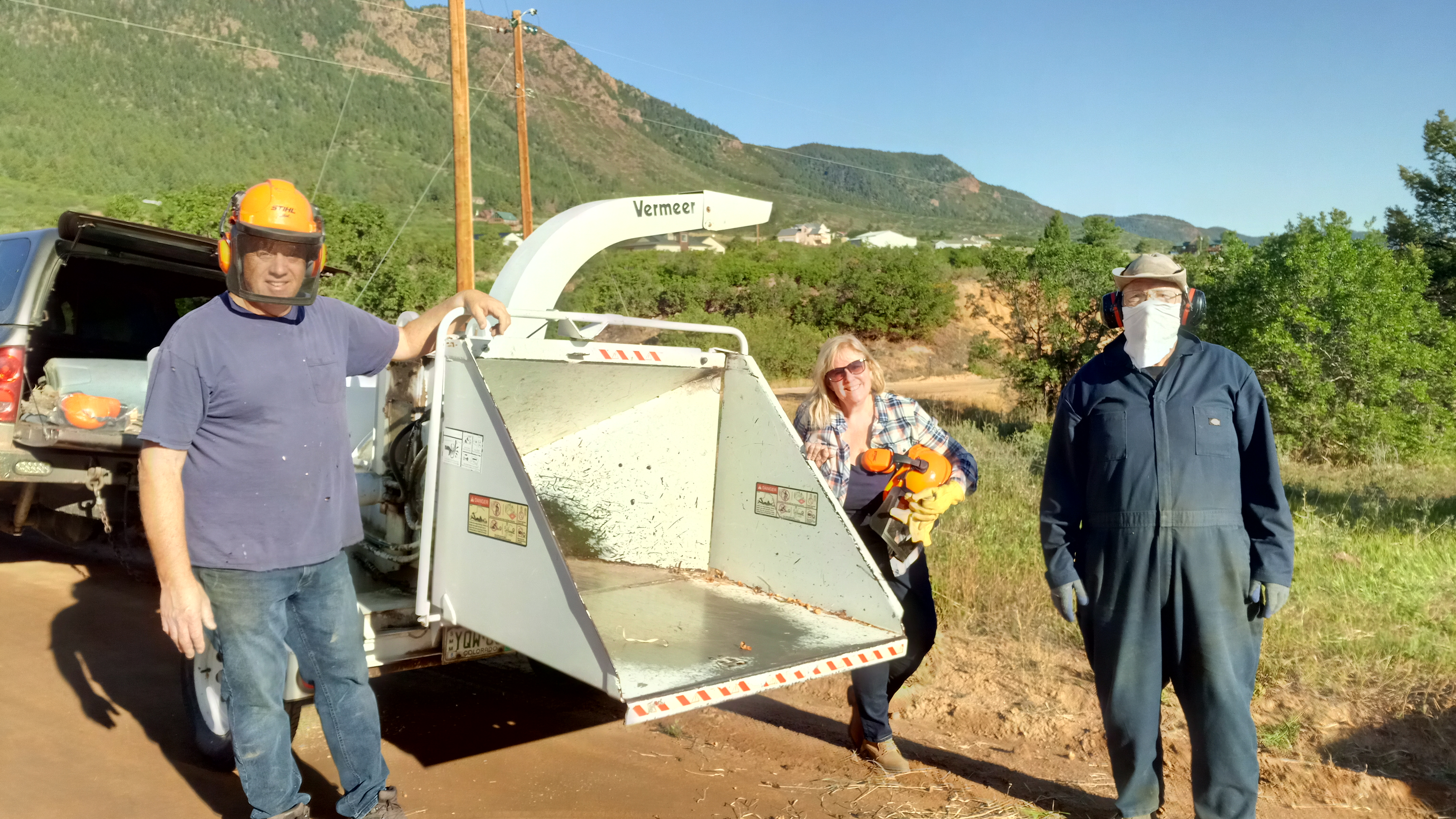
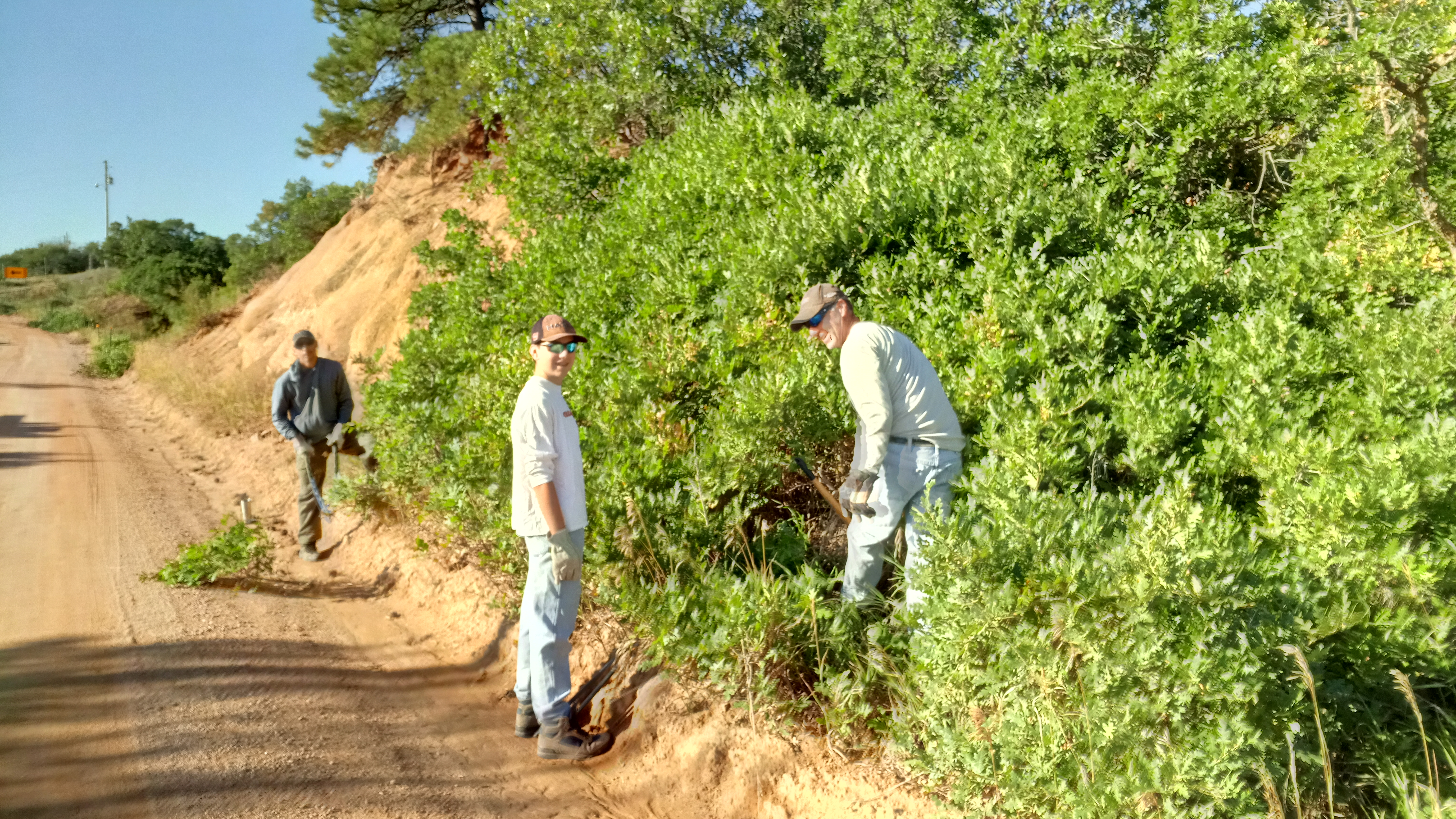
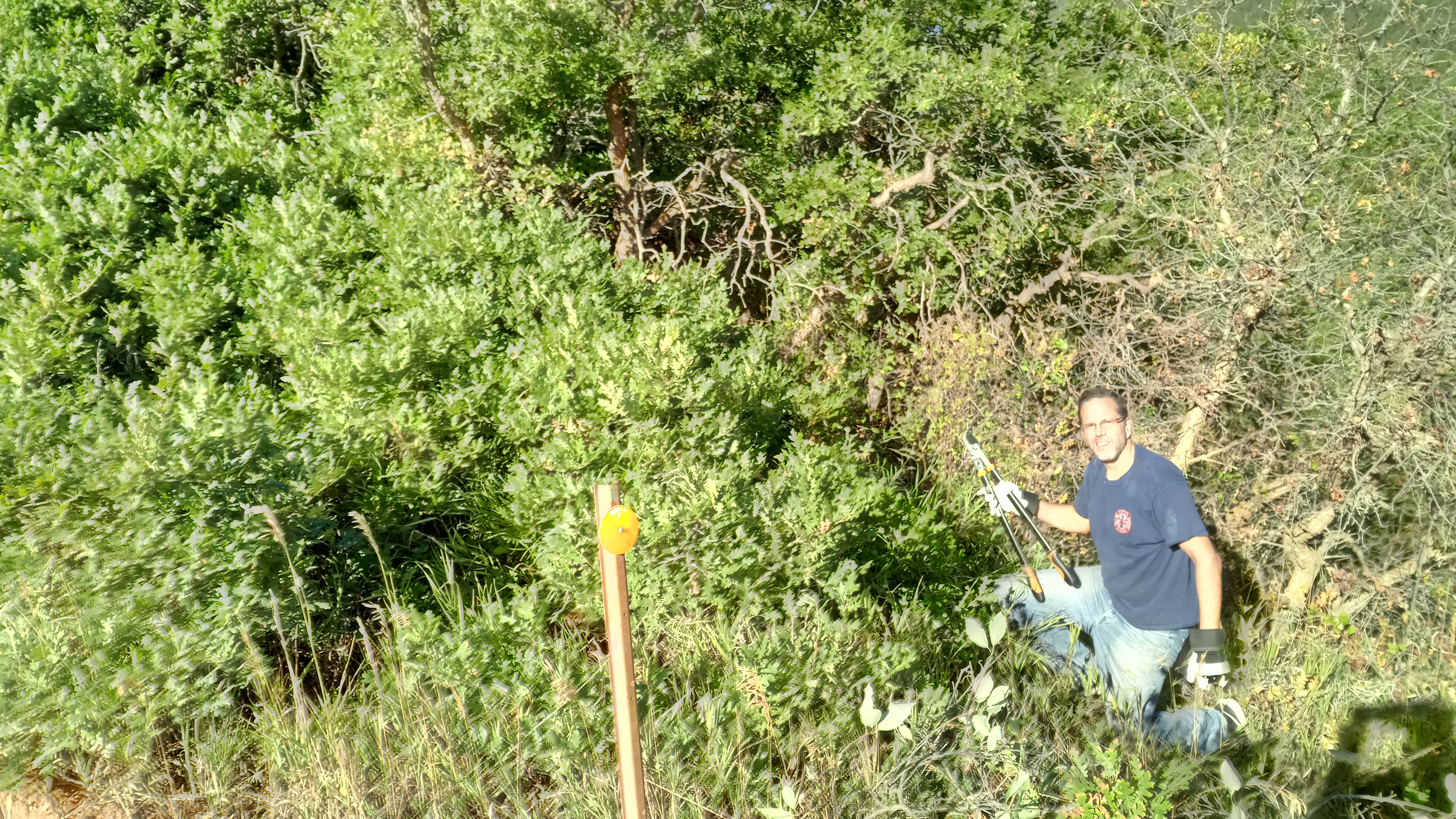
PS: Our next event will be Saturday Oct 3rd, focusing on the S4/S5 areas and creating a firebreak in the main south gully.
Neighborhood Firewise Event – Saturday 12 Sep 2020 @ 0730
Reminder all – we have our neighborhood Firewise mitigation event tomorrow, Saturday 12 Sep starting at 0730. We’ll meet by the “Gauntlet” (west end of Doolittle Rd), form up crews, and work on:
* Maintenance of E4/E6 areas (Gauntlet area)
* Maintenance and new work in S4/S5 areas (Evans/Fallon Rd)
* Chipping! Neighbor Tim obtained a chipper for us. Thanx Tim! This crew will go around the neighborhood and chip up piles that have been brought out to the road.
It’ll be a beautiful warm autumn day, but the work is hard so please dress appropriately: jeans/carhartts, boots, long sleeve shirt, and gloves.
If you’re comfortable with a chainsaw please bring that and you’ll go onto a sawyer/swamper crew; if you have a weed whacker modified for brush cutting please bring it; else branch clippers (fiskers) are useful. Rakes help with cleanup. We also need one person to be the photographer.
Some fuel for the chipper (diesel) and fuel for the saws/trimmers (mix gas 40:1-ish) is also useful.
Thanx, see ye tomorrow!
Fire Mitigation Meeting 2020-08-16
Howdy Neighbors, we’re having a fire mitigation/FireWise meeting this coming Sunday evening, 2020-08-16, and 19:00 (7pm), at Steve & Cathy’s home. See y’all there!
Update: Meeting notes posted here. You need to be logged in to view.
Upcoming Fire Mitigation Meeting
Howdy all –
We’re planning a neighborhood fire mitigation meeting and we need your input on a suitable date/time. Please check your email and respond with your preference. If you didn’t get the email, contact us at neighbors (at) MtHerman.org , we may have your email address incorrect. Thanx!
Wildfire Evacuation for your Critters
(Compliments of Rocky Top Veterinary Service)
Most of us have smelled smoke last week or seen warnings about burn restrictions. These signs have gotten us thinking about animal evacuation plans. Have you thought about your plan? Where would you take your large animals if you have to evacuate your property due to fire? How would you get there? How would you handle an evacuation if you’re out of town at the time? There’s no one right plan for everyone, but let’s talk about a few things everyone should keep in mind.
What location would you evacuate your large animals to?
Some people are able move their horses and other animals to a friend’s house. Others go to emergency locations set up at local fairgrounds or arenas. If you have a private property you can go to, make a plan so that you can avoid group evacuation locations and only have to move your animals once.
How are you going to move your animals?
If you have a trailer…is it in good working order? Can you safely and confidently load your animals, especially your horses, onto it? If you can’t load your horses, start practicing! Do all of your animals fit onto the trailer, or would you need to make multiple trips? If you don’t have a trailer…do you have a neighbor who has extra space on their trailer? Do you have a friend who could bring their trailer over to your house if evacuation looks likely? Many community members with trailers are more than willing to help transport animals during an emergency, but this is not something you want to have to figure out as it’s time to leave your house!
What other details should you keep in mind?
Do you have all of your animal paperwork together in an easy to find location? Vaccination records, coggins tests, and proof of ownership are all important. Consider taking identification pictures of your horse if they are not included on your other paperwork.
Are your animals up-to-date on vaccinations? This is especially important if evacuating to a public location where there will be a variety of other animals.
Is your horse picky about his water source? If so, fill a water tank to bring with you, so that they have access to the water they are used to.
Is your animal on any medications? Don’t forget to pack them, too!
If someone will be assisting you with evacuation, are you on the same page? Do they know your gate code, phone numbers, where you keep the keys to your truck, etc? Can they catch and load your animals if you are out of town? Make sure you have easy access to all of your emergency contact information, including your veterinarians, animal control, sheriff’s department, and neighbors.
If for some reason you end up turning your animals loose instead of evacuating them, make sure that your name and phone numbers are clearly marked on their bodies and that they have access to feed and water.
— o —
Naturally we are focused on your large animal friends, but don’t forget to have a plan for your small animals as well. Have leashes, carriers, paperwork, identification, medications, and feed ready to go for your dogs, cats, and other household pets!
Evacuation checklist:
- Feed and water for at least 3 days
- Daily medications
- Buckets for water and feed
- Hay net
- Halter and lead rope
- Paperwork: vaccination records, proof of ownership
- Shovel or pitchfork
- Bedding
- Flashlight or headlamp
- Emergency contact information
- Hoof pick
- Knife
- Standard first aid kit
Firewise 2019-2020 Certificate
Howdy Neighbors, here’s our 2019-2020 Firewise Certificate. Don’t forget to submit this to your insurer!
